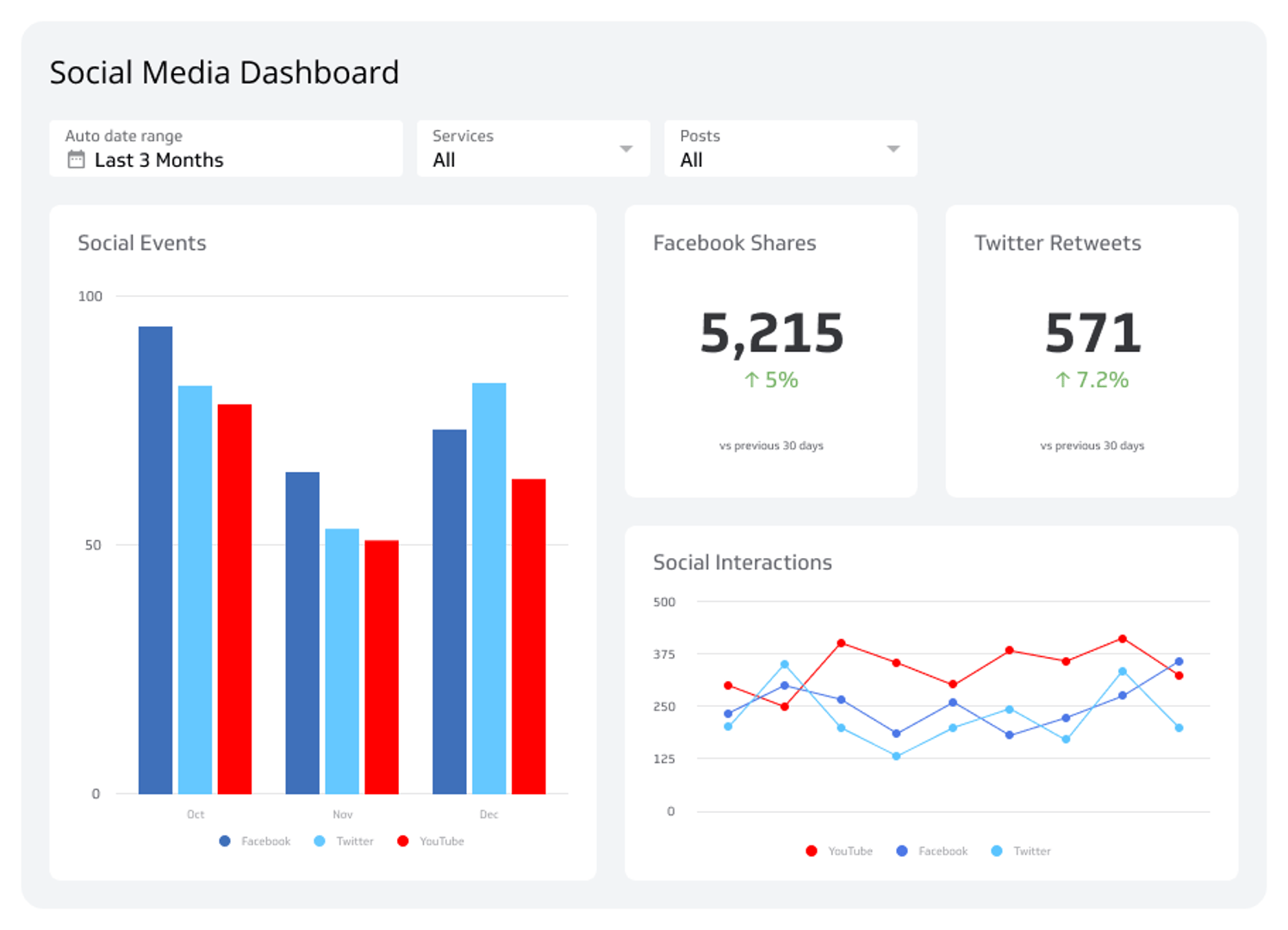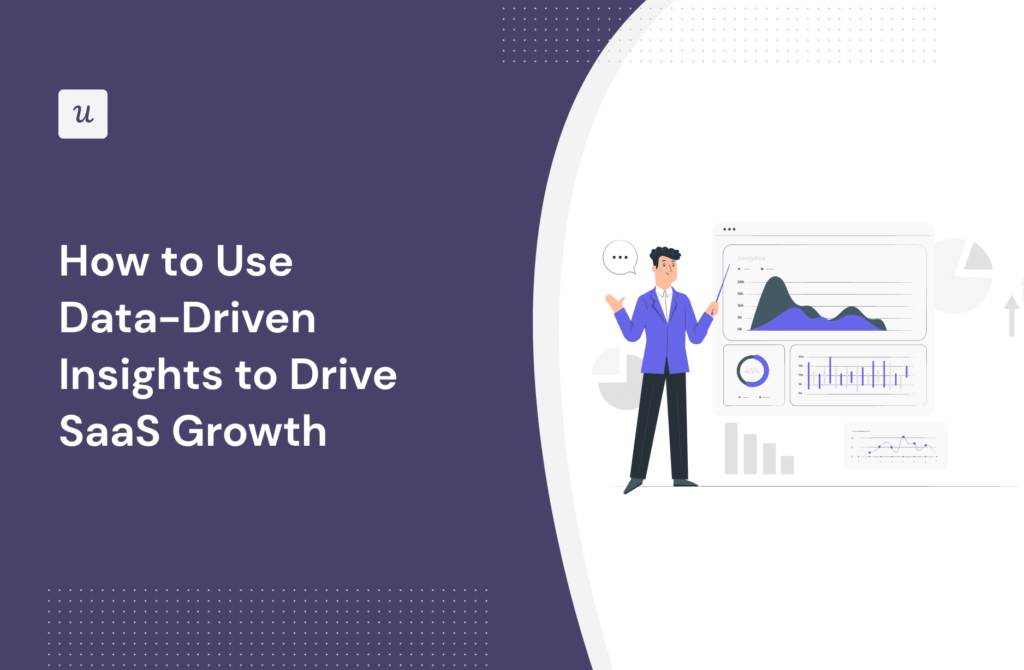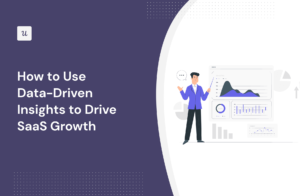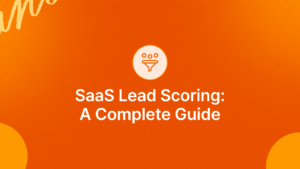Social media success demands strategy and precision. Data-driven methods can enhance outcomes.
In the digital age, social media is vital for business growth. Traditional tactics often fall short. That’s where data-driven strategies come in. They use precise metrics to guide decisions, ensuring maximum impact. SaaS tools make this process easier. They offer insights and analytics that help craft effective strategies.
Businesses can then target the right audience, at the right time, with the right message. This approach increases engagement and conversions. In this blog, we’ll explore how SaaS tools can transform your social media strategy. Discover the power of data and take your social media efforts to the next level.
Credit: vendedigital.com
Introduction To Data-driven Strategies
Data-driven strategies have transformed social media marketing. These strategies rely on data to make decisions. They help create content that resonates with the audience. Understanding data helps businesses improve their social media presence.
Importance Of Data In Social Media
Data reveals what content works best. It shows audience preferences and behavior. Analyzing data helps businesses understand their followers. Data insights lead to more effective social media campaigns. They help increase engagement and reach.
Role Of Saas Tools
Software as a Service (SaaS) tools simplify data analysis. They offer features that help gather, process, and interpret data. These tools save time and improve accuracy. They help businesses make informed decisions. SaaS tools also provide reports and insights. These are essential for shaping social media strategies.
Choosing The Right Saas Tools
Choosing the right SaaS tools for your data-driven social media strategy can be daunting. With countless options available, it’s crucial to identify the tools that align with your specific needs. The right tools can help you effectively manage your social media campaigns, track performance, and optimize your strategy. Below, we will explore the key features to look for and some popular SaaS tools that can elevate your social media efforts.
Want to know more about SEO and Analytics? Check out this article for helpful insights. Advanced Saas Content Marketing Strategies: Boost Engagement Today
Key Features To Look For
When selecting SaaS tools for social media, consider these key features:
- Analytics and Reporting: Provides detailed insights into your social media performance.
- Scheduling and Automation: Enables you to schedule posts and automate tasks.
- Social Listening: Monitors conversations and trends related to your brand.
- Content Management: Helps organize and store your content efficiently.
- Audience Segmentation: Allows you to target specific audience groups.
Popular Saas Tools
Here are some popular SaaS tools that can enhance your social media strategy:
| Tool | Key Features |
|---|---|
| Hootsuite | Analytics, Scheduling, Social Listening, Team Collaboration |
| Buffer | Post Scheduling, Analytics, Content Calendar, Team Management |
| Sprout Social | Analytics, Social Listening, Customer Engagement, Content Management |
| HubSpot | CRM, Social Media Management, Analytics, Marketing Automation |
Choosing the right SaaS tools can significantly impact your social media strategy. Focus on the features that matter most to your goals. With the right tools, managing and optimizing your social media efforts becomes more efficient and effective.
Collecting Social Media Data
Collecting social media data is crucial for crafting effective strategies. With SaaS tools, gathering this data becomes easier and more precise. It allows you to understand your audience better. You can measure your content’s performance. You can also track your competitors’ activities. Let’s dive into the types of data to gather and best practices for data collection.
Types Of Data To Gather
Start by collecting demographic data. This includes age, gender, and location of your audience. Knowing these helps you tailor your content. Next, focus on engagement metrics. Look at likes, comments, and shares. These show how well your content resonates. Another crucial type is reach and impressions. This data tells you how many people see your posts. It helps in measuring your content’s visibility.
Don’t forget sentiment analysis. This data shows the mood behind comments. Positive, negative, or neutral? It helps you understand public opinion. Lastly, track your competitors. See what type of content they post. Observe their engagement levels. This data helps you stay competitive.
Discover engaging insights on SEO and Analytics by reading this featured article. How to Create a Winning B2B SEO Campaign: Proven Strategies
Best Practices For Data Collection
Use reliable SaaS tools. They offer accuracy and efficiency. Set clear goals for what data you need. This prevents data overload. Regularly update your data collection methods. Social media trends change fast. Adapt to stay relevant. Ensure your data is clean. Remove duplicates and errors. It improves the quality of your analysis.
Respect user privacy. Follow regulations like GDPR. It builds trust with your audience. Test different times and formats for posts. Collect data on what works best. Use this information to refine your strategy. Train your team to understand the tools. They should know how to use data effectively. This maximizes the tools’ benefits.
Analyzing Social Media Data
Analyzing social media data is crucial for effective social media strategies. With SaaS tools, businesses can gather and analyze vast amounts of data. This helps in understanding audience behavior, preferences, and engagement patterns. By leveraging these insights, companies can tailor their social media campaigns to better meet their audience’s needs.
Data Analysis Techniques
There are several data analysis techniques used in social media analytics. Common methods include:
- Sentiment Analysis
- Trend Analysis
- Content Analysis
- Engagement Metrics
Sentiment Analysis helps in understanding the emotional tone of user interactions. Trend Analysis identifies emerging topics and popular hashtags. Content Analysis examines the type of content that performs best. Engagement Metrics track likes, shares, comments, and other interactions.
Interpreting Data Insights
Interpreting data insights is essential for making informed decisions. After collecting data, you need to:
- Identify Key Metrics
- Compare with Industry Benchmarks
- Analyze Audience Demographics
- Evaluate Content Performance
Identifying key metrics involves looking at engagement rates, reach, and impressions. Comparing with industry benchmarks helps in understanding where your brand stands. Analyzing audience demographics provides insights into age, gender, and location. Evaluating content performance involves assessing which posts resonate most with your audience.
Using these techniques and insights can significantly enhance your social media strategy. It enables more targeted and effective campaigns, driving better results.
Enhance your knowledge on SEO and Analytics by exploring this related piece. Local SEO Enhancements With Niche SaaS Tools: Boost Your Rankings
Creating Targeted Content
Creating targeted content is essential for effective social media strategies. This involves using data to understand your audience and tailor your content to their preferences. SaaS tools can help you analyze this data and create personalized content that resonates with your audience.
Identifying Audience Preferences
Start by analyzing the data collected from your social media platforms. Look at metrics like engagement rates, shares, and comments. These insights reveal what type of content your audience enjoys. SaaS tools can streamline this process, making it easier to identify trends and patterns.
Consider conducting surveys or polls. This direct approach can give you valuable feedback. Understand what topics interest your audience the most. Use this information to guide your content creation process.
Personalizing Content
Once you know your audience preferences, focus on personalizing your content. Tailored content can significantly increase engagement. Use the data to create posts that speak directly to your audience’s interests and needs.
Leverage SaaS tools to automate and manage personalized content. These tools can segment your audience based on their behavior and preferences. Then, you can deliver specific content to each segment. This ensures your content remains relevant and engaging.

Credit: www.seerinteractive.com
Optimizing Posting Schedules
Optimizing your posting schedules on social media can significantly boost engagement. With the help of SaaS tools, you can determine the best times to post and manage your content more efficiently. These tools analyze data to help you make informed decisions, ensuring your content reaches your audience when they are most active.
Best Times To Post
Knowing the best times to post on social media can increase your reach and engagement. Different platforms have different peak times. Here is a simple guide:
| Platform | Best Times to Post |
|---|---|
| Wednesday, 11 a.m. and 1-2 p.m. | |
| Wednesday, 11 a.m. and Friday, 10-11 a.m. | |
| Wednesday, 9 a.m. and Friday, 9 a.m. | |
| Wednesday, 9-10 a.m. and 12 p.m. |
These times are based on general trends. Use SaaS tools to find the best times for your specific audience.
Using Scheduling Tools
Scheduling tools help you plan and automate your posts. This saves time and ensures consistency. Some popular tools include:
- Buffer: Easy to use and supports multiple platforms.
- Hootsuite: Offers advanced analytics and team collaboration features.
- Sprout Social: Provides detailed reports and social listening tools.
These tools allow you to set your posts in advance. They also offer insights into your audience’s behavior and engagement patterns. This data helps you adjust your posting schedules for maximum impact.
Measuring Engagement Metrics
Measuring engagement metrics is crucial for any social media strategy. It helps you understand how your audience interacts with your content. With SaaS tools, tracking these metrics becomes easier and more efficient. Let’s dive into the key metrics to track and the tools that can help you measure them.
Key Metrics To Track
Engagement metrics are indicators of your content’s performance. These metrics show how your audience reacts to your posts. Key metrics include likes, comments, shares, and clicks. Each metric provides insights into different aspects of engagement. For example, likes indicate approval, while shares show content value. Comments can offer direct feedback from your audience.
Another important metric is the engagement rate. It is the ratio of interactions to your total followers. A higher engagement rate means your content resonates well with your audience. Finally, tracking followers’ growth helps you see how your audience expands over time.
Tools For Measurement
Several SaaS tools can help you measure engagement metrics effectively. One popular tool is Hootsuite. It offers detailed analytics and reports on various social media platforms. Another tool is Buffer. It helps you track key metrics and schedule posts. Sprout Social is also a great option. It provides in-depth analytics and engagement reports.
Google Analytics can be useful too. It tracks traffic from social media to your website. This helps you understand how social media drives web traffic. Each tool has unique features. Choose one that fits your needs and budget.
Iterating And Improving Strategies
Iterating and improving strategies is key to success in social media marketing. Using data-driven approaches can help refine and enhance these strategies. SaaS tools make the process more efficient and effective.
A/b Testing
A/B testing involves comparing two versions of a social media post. This helps determine which version performs better. SaaS tools can automate this process. They track metrics such as engagement and click-through rates. This data helps in making informed decisions. Marketers can then tweak content based on what works best.
Continuous Feedback Loop
A continuous feedback loop is vital for ongoing improvement. It involves collecting and analyzing feedback regularly. SaaS tools can gather this data from various channels. This includes likes, comments, and shares. Analyzing this feedback helps identify trends and patterns. Marketers can then adjust their strategies accordingly. This ensures that the content remains relevant and engaging.
Case Studies And Examples
Case studies and examples provide valuable insights into data-driven social media strategies. They highlight real-world applications and the effectiveness of SaaS tools in driving successful campaigns. This section focuses on showcasing successful campaigns and the lessons learned from them.
Successful Campaigns
One notable example is a retail brand that used a SaaS tool for social media analytics. They identified key trends and audience preferences. By adjusting their content strategy, they increased engagement by 40% in three months.
Another example is a fitness app that leveraged a scheduling tool. They timed their posts based on audience activity data. This resulted in a 25% boost in user interactions and app downloads.
A tech startup used a SaaS tool to monitor competitor activities. They discovered gaps in the market and tailored their campaigns accordingly. This led to a 15% increase in market share within six months.
Lessons Learned
From these case studies, several lessons emerge. The first lesson is the importance of understanding your audience. Data from SaaS tools can provide deep insights into audience behavior.
Another lesson is the value of timing. Scheduling posts when your audience is most active can significantly boost engagement. This was evident in the fitness app’s success.
Lastly, monitoring competitors can reveal market opportunities. The tech startup’s growth illustrates the power of competitive analysis. Using SaaS tools to track competitors can help refine strategies and achieve better results.
These examples underscore the effectiveness of data-driven approaches. SaaS tools play a crucial role in optimizing social media strategies.

Credit: www.klipfolio.com
Future Trends In Data-driven Social Media
Data-driven social media strategies are evolving rapidly. With advancements in technology, businesses must stay updated. They need to leverage the latest tools and techniques. This section explores the future trends in data-driven social media.
Emerging Technologies
New technologies are transforming social media. Artificial Intelligence (AI) is a major player. AI helps analyze user behavior and preferences. It provides insights for creating personalized content. This improves user engagement and retention.
Machine Learning (ML) is also significant. ML algorithms predict trends based on data. They help in content curation and scheduling. This ensures that content reaches the right audience at the right time.
Blockchain technology is gaining ground. It offers transparency and security in data transactions. This builds trust among users and businesses. Blockchain can also help in verifying the authenticity of user-generated content.
Augmented Reality (AR) and Virtual Reality (VR) are becoming popular. They offer immersive experiences for users. Businesses can use AR/VR for interactive ads. This enhances user engagement and brand recall.
Predictions For The Future
Social media will become more personalized. AI will play a key role in this. It will analyze user data to deliver tailored content. Users will see content that matches their interests and behavior.
Video content will dominate. Short-form videos will be more popular. Platforms like TikTok and Instagram Reels are leading this trend. Businesses should focus on creating engaging video content.
Influencer marketing will continue to grow. Micro-influencers will be more valuable. They have a loyal and engaged audience. Businesses should collaborate with micro-influencers for better reach and impact.
Social commerce will rise. More users will shop directly from social media platforms. Integrating e-commerce with social media will be crucial. Businesses should optimize their social media profiles for shopping.
Data privacy will be a major concern. Users will demand more control over their data. Businesses must prioritize data protection. They should be transparent about data usage and comply with regulations.
In summary, data-driven social media strategies will evolve with technology. Businesses must adapt to these changes. They need to leverage emerging technologies and stay ahead of trends.
Frequently Asked Questions
What Are Data-driven Social Media Strategies?
Data-driven social media strategies use analytics to make informed decisions. They help optimize content, timing, and engagement. By leveraging data, businesses can target the right audience. This leads to better ROI and more effective campaigns.
How Can Saas Tools Help In Social Media?
SaaS tools streamline social media management. They offer analytics, scheduling, and automation features. These tools save time and improve efficiency. They also provide insights to enhance strategy. This results in better engagement and growth.
What Is The Role Of Analytics In Social Media?
Analytics provide valuable insights into social media performance. They help identify what works and what doesn’t. By analyzing data, businesses can improve content and strategy. This leads to higher engagement and better results.
Why Is Engagement Important In Social Media?
Engagement builds a strong connection with the audience. It increases brand loyalty and trust. High engagement also boosts visibility. This results in better reach and growth. Engaged followers are more likely to convert.
Conclusion
SaaS tools make social media strategies more effective. They provide valuable data insights. This helps in creating better content. Businesses can reach their audience easily. Tracking performance becomes simpler too. These tools save time and effort. Data-driven strategies lead to growth.
Companies can stay ahead in the game. It’s time to embrace these tools. Improve your social media presence today.











